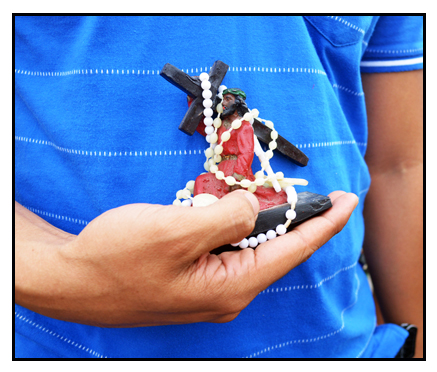 in a country with innumerable fiestas and festivals in a country with innumerable fiestas and festivals
that honor Christ, the Santo Niño,
the Virgin Mary, and countless patron saints,
the Nazarene festival stands above it all.
awesome, incomprehensible, unbelievable.
it defines the fervent religiosity of the Filipino
for whom everything good that happens is biyaya ng Diyos
for whom everything that befalls is pagsubok ng Diyos.
it is a window into the capabilities of veneration
for the youth, a rite of passage that beckons.
for some, perhaps, penance and redemption
for the masa, the potential for the collective
to
transform veneration into the rabid idolatry
for a black statue of Christ.
a man called by many names.
Nazareno.
Black Nazarene.
El Señor.
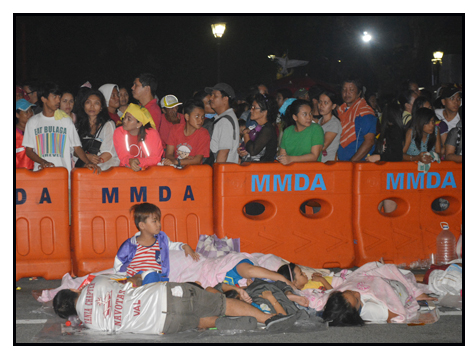 El Nazareno negro. El Nazareno negro.
Nuestro Padre Jesus.
Poong itim na Nazareno.
someone dared dubbed a new age name:
the Dark Lord of Quiapo.
the festival fell on a Saturday.
twelve million were expected
to join the Nazarene traslacion from Luneta to Quiapo.
tens of thousands lined up for the pahalik.
some with panatas decades old,
giving thanks for past miracles and favors granted,
some seeking new ones.
they patiently shufflled in snaking lines, six to eight thick,
cell phones whiling the time away,
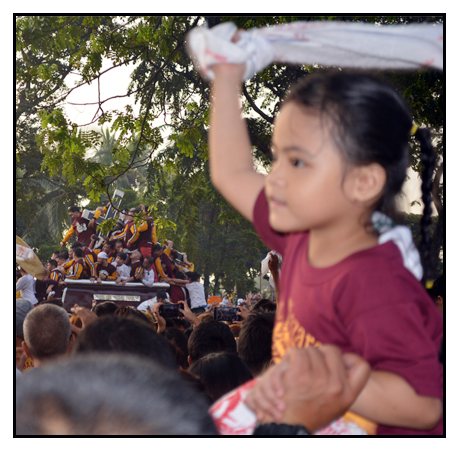 to wipe a cloth or plant a
kiss on the Nazarene. to wipe a cloth or plant a
kiss on the Nazarene.
many came early, staked tents to shield against the sun.
many laid ground mats and blankets, soaked by the sun,
until nighttime that brought its umbrella of a starry sky.
i have returned here a fourth time,
walked between the staked spots of blankets and tents,
listened to their stories of faith and panata
the grounds flickering
with tiny candlelit Nazarene statues,
leftover Christmas stars and lights,
the streets lined with
small and large pull-floats,
some
mounted on tricycles and jeepneys.
as towels and hankies were wiped
and selfies posed and taken.
all around, the usual commerce of religion
of candle offerings and holy icons, handkerchiefs and
t-shirts
silk-screened with Nazarene images.
from the grandstand, the usual priestly fare
of sermons, homilies and liturgies
interspersed with admonitions to the masa's errant ways.
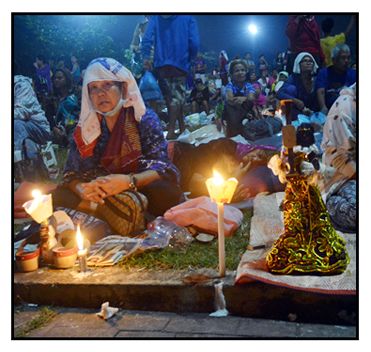 many snatched hours of sleep many snatched hours of sleep
In-between prayers and alleluias
on beds of cardboard, grass, or concrete.
all these is prelude to the true essence of the festival.
the calm before the storm
the transformation into the
madness of the traslacion,
the transfer from Luneta to Quiapo.
the veneration that transcends into idolatry.
the millions that would line the streets.
the tsunami of rabid religiosity and fanatical faith
waves of devotees that would engulf the andas,
the barefooted men and women
pushing and pulling pushing and pulling
many risking life and limb
forcing a path to the carriage
to pull on the rope
to touch a towel or handkerchief on Nazarene.
as devotees cheered in unison
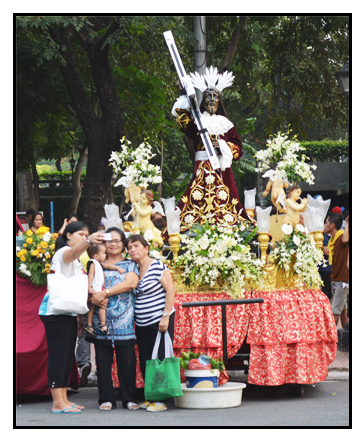 viva! viva! viva! viva! viva! viva!
twirling white towels and handkerchiefs.
the andas slogged through clogged streets
of resistant masses of humanity.
a short distance that would take more then 21 hours.
some parents risked their children,
riding on their shoulders,
to catch a glimpse of the veneration
to be engulfed by the sounds, the rhythms, and sounds.
some too young to understand.
an infant is briefly hoisted in the air as the Nazarene passed,
likely searching for a miracle.
i glanced at the barefooted young, drenched in sweat,
quietly contemplating their brief encounter with the andas.
i stood mesmerized as I watched the Nazarene pass by
to begin its slow plodding journey to Quiapo.
i have returned a fourth time.
not in search of miracles or favors
but to watch the faithful
in its adoration of the Nazarene
to grasp the faith that fuels
the maelstrom of the procession.
to unbelievers, it is the madness of religion.
to some believers, it is shameful idolatry.
 to the masa, it is, simply, the vow. . . the panata. to the masa, it is, simply, the vow. . . the panata.
in this cauldron of beliefs, idolatry, and veneration
for the millions who joined in the Nazarene adoration
the festival is respite from the dreadful inequities
and desperate hopelessness of their lives,
to renew their faith, to express gratitude
to ask for another favor or miracle
or to renew their immutable commitment to their panatas.
words and images fail.
it is an event that must be experienced from within.
as spectator. as faithful. or as barefooted devotee.
the pahalik. the statue. the andas. the panata.
the singularity of the sight and sounds
in this ultimate theater of Filipino religiosity.
|

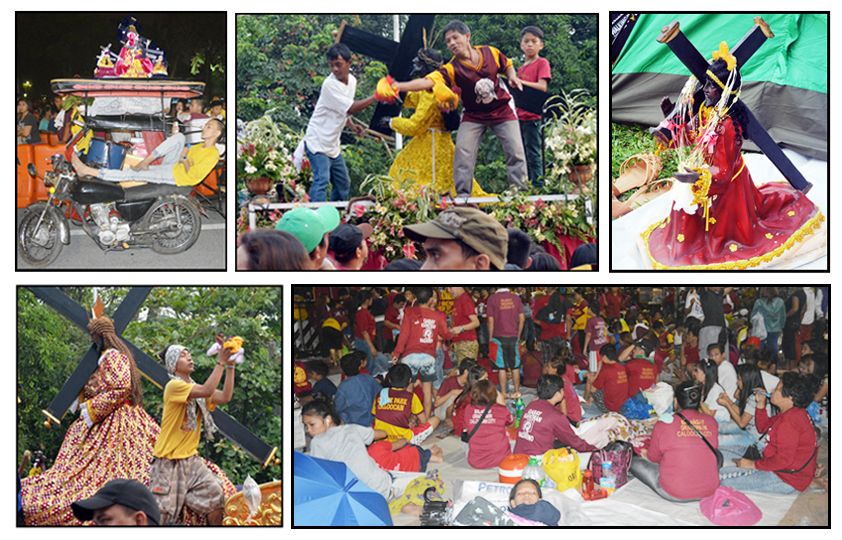


 in a country with innumerable fiestas and festivals
in a country with innumerable fiestas and festivals El Nazareno negro.
El Nazareno negro. to wipe a cloth or plant a
kiss on the Nazarene.
to wipe a cloth or plant a
kiss on the Nazarene. many snatched hours of sleep
many snatched hours of sleep viva! viva! viva!
viva! viva! viva! to the masa, it is, simply, the vow. . . the panata.
to the masa, it is, simply, the vow. . . the panata.